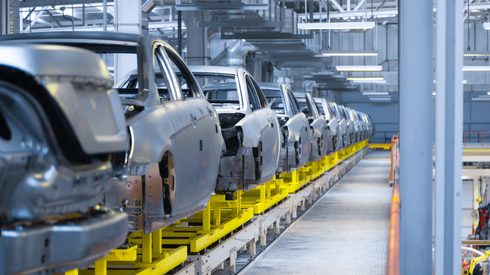Under the agreement, Australia’s Syrah Resources will supply United States electric vehicles (EVs) manufacturer Tesla with natural graphite active anode material from its Vidalia production facility in the US at a fixed price for four years, starting with the first commercial production at the site.
Syrah’s share price surged 32% on the news – a sign that the market did not underestimate the significance of the agreement for the future of the company.
The deal is significant for Syrah since it earmarks the majority of the projected output from its proposed expansion of the Vidalia operation to a large consumer. The agreement comes with an option for Tesla to buy additional volumes from Vidalia, subject to Syrah expanding its anode capacity beyond 10,000 tonnes per year, according to the announcement.
The company is due to make a final decision next month on whether to pursue the capacity expansion at the site, and is in the process of assessing the financing commitment needed. The agreement to supply Tesla would weigh positively on the financial planning of the operation.
Until now, the attention on the part of OEMs to look at their future supply of battery components had almost been entirely on cathodes. Lithium, in particular, has been the subject of many a deal struck this year to date, from both existing suppliers and oncoming projects, some of which are still years away from first production.
A source at an international OEM recently lamented to Fastmarkets how “automakers have been entirely focused on cathode materials, while anode has been in the backseat.”
The share of costs is the main reason for that, he added. Component costs in battery cathodes are higher than in anodes, as the rally in lithium and cobalt prices this year has shown. As such, cost management has prioritized cathode raw materials sourcing and price planning.
As the source put it: “Cutting 1% in cathode [costs] gives you higher savings than 1% in anode.”
The perception of supply shortages on the cathode side supports this, given the progressive tightness lithium and cobalt have displayed in 2021.
Prices for graphite, both natural flake as well as natural-based spherical, have also increased in the past few months amid logistical constraints, higher demand and an energy crunch in China, although the pace of growth has been nowhere near as staggering as that of, say, lithium.
Availability projections for graphite are likewise less dire. While the lithium shortage is already here, sentiment for future graphite availability is still more relaxed.
That said, graphite is a mainstay component of battery anodes across the main battery chemistries employed by the EV sector today. In volume terms, the share of graphite is quite large, especially in some chemistries.
Other alternatives, such as silicon anode, are expected to make important inroads in the next couple of years.
Using silicon anode would reduce the graphite component but, again, the technology is still in development, and has not been adopted. Widespread adoption in the automotive industry is a long process, and today, what you have in anodes is graphite, not silicon.
If on the one hand automakers are open to exploring alternative technologies that could offer upsides in performance and costs, they still have to play with existing technologies in the meantime, and plan accordingly.
How to source graphite is a question that will need answering.
And supply bottlenecks for graphite anode already exist.
The global market remains ever so skewed toward China’s solid dominance. The country hosts most of the spherical graphite processing capacity, is one of the largest producers of synthetic graphite – normally blended with coated spherical (CSPG) into battery anodes – and is home to the largest anode manufacturers.
Non-Chinese presence in spherical graphite and in graphite anode material is still under development.
Syrah is expected to be the first ex-China graphite producer to move into successful production of active anode material. Other graphite producers are also moving downstream into the battery space, aiming to counter China’s supply dominance.
While supply tightness may be less visible on the horizon for graphite anode than for cathode materials, some strategic planning on securing supply will have to feature in Western OEMs’ considerations.
There is expectation in the market that the deal between Syrah and Tesla will push other OEMs to take stock of the graphite bottlenecks and move accordingly.






